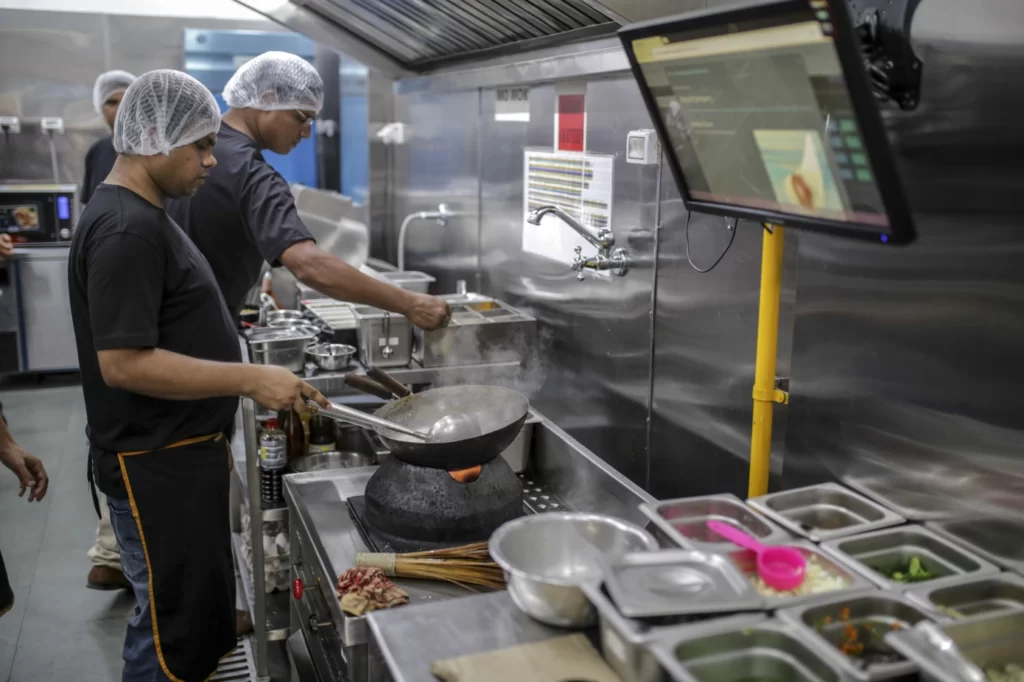A ghost kitchen is a restaurant that only offers food for off-premises consumption. Most ghost kitchens are delivery-only, taking orders only through first-party and third-party platforms. On the other hand, some ghost kitchens offer takeaway or drive-thru service — albeit these are the exception rather than the rule.
Ghost kitchens occur in many forms and sizes, with some shared rooms and others reserved for a single restaurant chain. We’ve broken down the many types to figure out which one is right for you.
Commissary kitchens
Commissary kitchens provide dedicated space for preparing food and distributing it to various locations. Let’s pretend you own many food trucks in the Los Angeles area. It can be difficult to fulfill each order fast due to limited food prep and storage space.
You have a shared kitchen space that you pay rent on your own time, making it highly flexible. You can use your commissary kitchen whenever you need more room to process orders or store goods without paying for the facility outright.
You’ll have all the necessary tools to get started fast and efficiently. A commissary kitchen is a less expensive alternative to creating your own kitchen. You will be able to rent the property without incurring any financial risk or obligation.

Credit: techcrunch
Commercial kitchens
Do you frequently receive larger internet orders that require a lot of kitchen space and help fulfill? Commercial kitchens are larger industrial kitchens licensed to cook food for restaurant chains and catering businesses.
A good commercial kitchen planning and design provide you with your own private cooking space.
You won’t have to worry about renting out specific periods or sharing your place. You have your own dedicated site to prep orders with a good commercial kitchen planning and design anytime you need it.

Credit: New Ventures Advisors
Incubator kitchens
Incubator kitchens, also known as pop-up kitchens, are mobile kitchens that can be linked to a restaurant, a food truck, or even a kiosk. These temporary kitchens will be used to prepare incoming delivery orders.
This allows personnel to divide and conquer, shifting the delivery workload to the incubator kitchen rather than tackling all orders in one kitchen, resulting in inefficiencies and inaccurate deliveries.
Each delivery order that comes into the brick-and-mortar restaurant is designed to help streamline productivity in these kitchens. It has a distinct area for order preparation and handing over to arriving delivery vehicles.
There is a common delivery-only area within each incubator kitchen where you can try new brands at your leisure. You have the freedom you need to test different concepts out of one single kitchen space, similar to commissary kitchens.
Kitchen pods
Kitchen pods are easier to relocate between areas such as parking lots and behind restaurants than other forms of ghost kitchens. These are mainly shipping containers that are used as flexible cooking space. This allows restaurateurs to cook anywhere and reach out to clients on the ground.
They are easier to move, but they are also smaller. Furthermore, because kitchen pods are typically gloomy and lack windows, it is more difficult to rapidly prepare orders and meet delivery demand. Large orders might be challenging to prepare correctly with little ventilation and natural light.

Credit: crazytadka
CloudKitchens
CloudKitchens gives restaurants their secret sauce for expanding delivery. We have the experience you need to get your delivery down to a science, whether you’re a food truck owner, franchisee, small restaurant owner, or part of a big chain. CloudKitchens provides several delivery options to meet your individual requirements. We’ll be there for you every step, whether you’re looking to expand your restaurant or simply need more prep space. The delivery of our ghost kitchens is a priority.